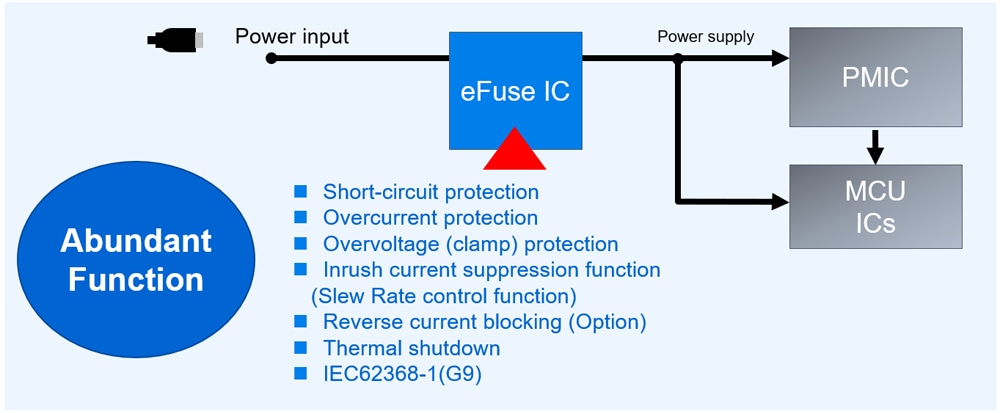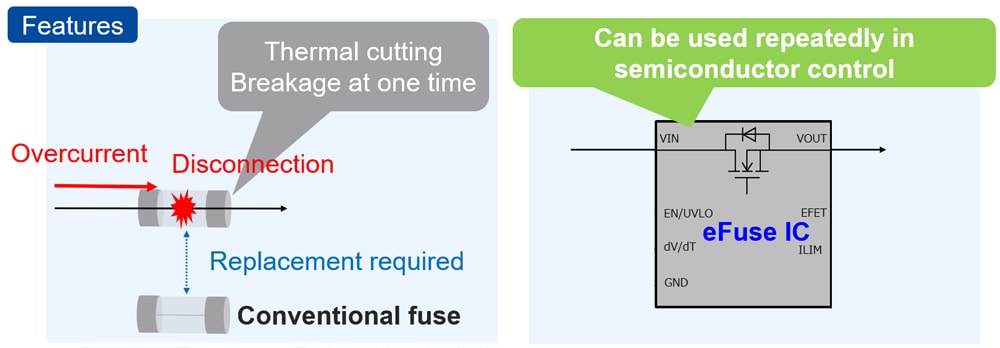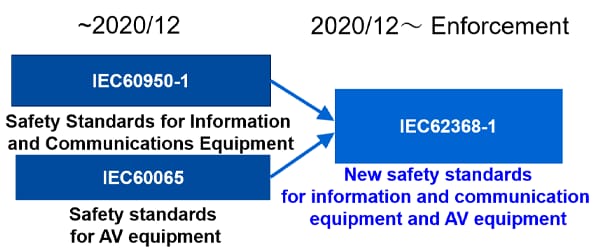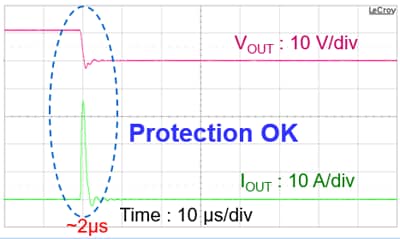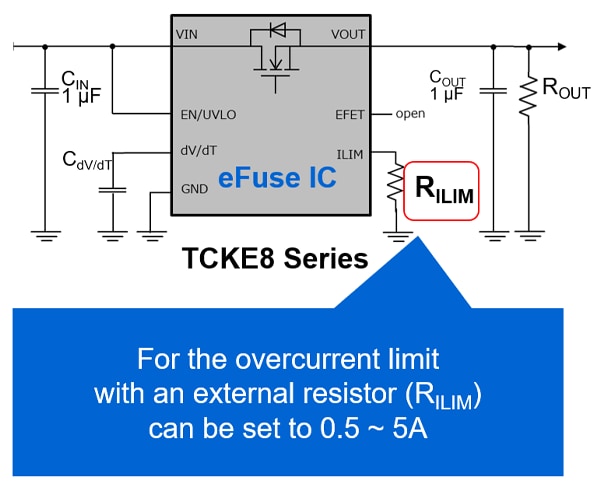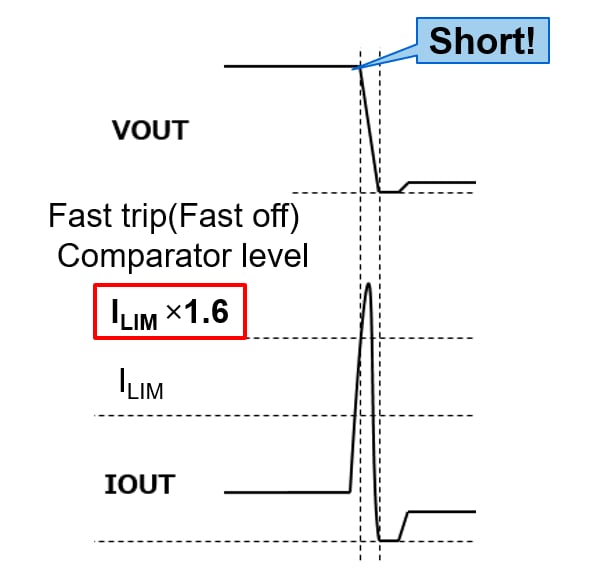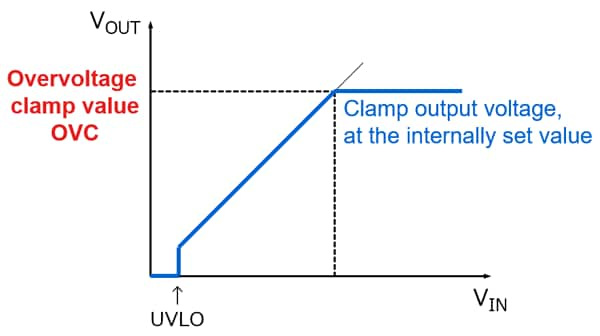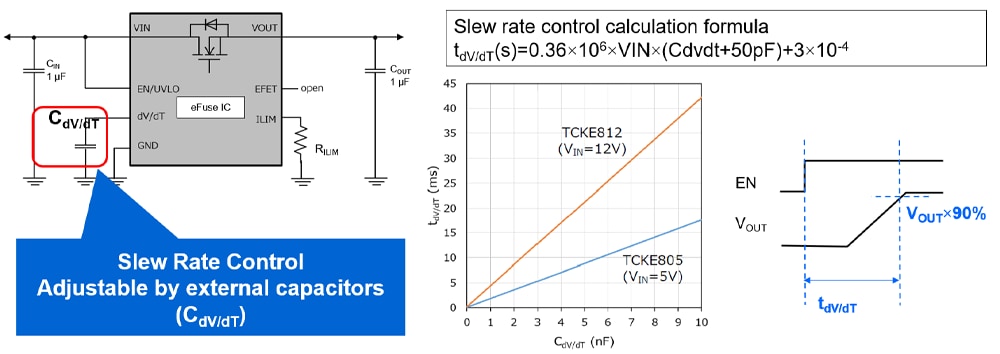- General Top
- SEMICONDUCTOR
- STORAGE
- COMPANY
-
My ToshibaSemicon
- Semiconductor Top
-
ApplicationsAutomotive
Body Electronics
xEV
In-Vehicle Infotainment
Advanced Driver-Assistance Systems (ADAS)
Chassis
IndustrialInfrastructure
BEMS/HEMS
Factory Automation
Commercial Equipment
Consumer/PersonalIoT Equipment
Healthcare
Wearable Device
Mobile
Computer Peripherals
-
ProductsAutomotive Devices
Discrete Semiconductor
Diodes
Transistors
Logic ICs
Analog Devices
Digital Devices
Wireless Devices
※
: Products list (parametric search)
Power SemiconductorsSiC Power Devices
※
: Products list (parametric search)
Isolators/Solid State RelaysPhotocouplers
Digital Isolators
Solid State Relays
Fiber Optic Transmitting Modules
※
: Products list (parametric search)
MOSFETsIGBTs/IEGTsBipolar Transistors※
: Products list (parametric search)
Diodes※
: Products list (parametric search)
MicrocontrollersMotor Driver ICsIntelligent Power ICs※
: Products list (parametric search)
Power Management ICsLinear ICs※
: Products list (parametric search)
General Purpose Logic ICsLinear Image SensorsOther Product ICsOther Product ICs
※
: Products list (parametric search)
-
Design & Development
-
Knowledge
- Where To Buy
- Part Number & Keyword Search
- Cross Reference Search
- Parametric Search
- Stock Check & Purchase
This webpage doesn't work with Internet Explorer. Please use the latest version of Google Chrome, Microsoft Edge, Mozilla Firefox or Safari.
require 3 characters or more. Search for multiple part numbers fromhere.
The information presented in this cross reference is based on TOSHIBA's selection criteria and should be treated as a suggestion only. Please carefully review the latest versions of all relevant information on the TOSHIBA products, including without limitation data sheets and validate all operating parameters of the TOSHIBA products to ensure that the suggested TOSHIBA products are truly compatible with your design and application.Please note that this cross reference is based on TOSHIBA's estimate of compatibility with other manufacturers' products, based on other manufacturers' published data, at the time the data was collected.TOSHIBA is not responsible for any incorrect or incomplete information. Information is subject to change at any time without notice.
require 3 characters or more.
1-3. Advantages of Semiconductor-fuse eFuse IC (2)

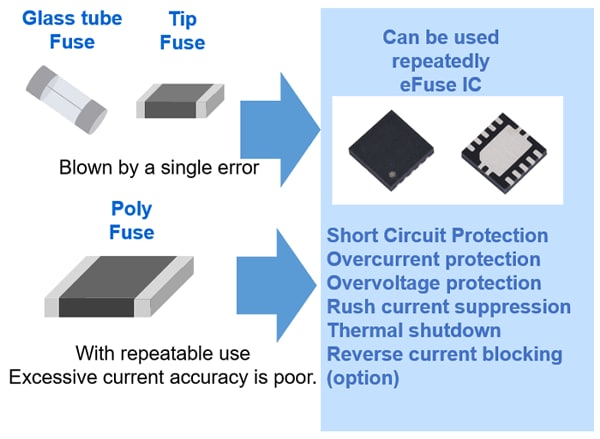
|
Glass tube |
Tip |
Poly |
Semiconductor fuse : eFuse IC |
|---|---|---|---|---|
Repeatability |
- |
- |
✓ |
✓✓✓ |
| Overcurrent protection Speed and accuracy |
- |
- |
- |
✓✓✓ |
Other protection functions |
- |
- |
- |
✓✓✓ |
Effect of ambient temperature |
- |
- |
- |
✓✓✓ |
Single unit mounting area |
- |
✓✓ |
- |
✓ |
| Including protection circuit Total mounting area |
- |
- |
- |
✓✓✓ |
Cost of individual parts |
✓ |
✓✓ |
- |
✓ |
| Function and maintenance Including total costs |
- |
- |
- |
✓✓✓ |
Compared with conventional fuses, eFuse IC has the advantage of superior protective performance.
Comparing with repeatedly usable conventional fuses, such as poly fuses, eFuse IC has the advantage of excellent accuracy of overcurrent protection and high protection speed.
In addition, it has built-in protection functions such as overvoltage and Reverse Current Bloking (RCB) function.
The efuseIC itself is larger than the chip fuse, but eFuse IC becomes overwhelmingly small in the total mounting area including the protective functions of peripheral ICs and components, such as overvoltage and slew-rate control.
Although a cost of an eFuse IC is higher than a conventional fuse, considering the total cost, such as integrating protective functions and eliminating maintenance work, we believe that eFuse IC will be low.
Basics of eFuse ICs
Related information
- Product Web Page
- Applidcation Notes
- FAQ
- Parametric searches for all Toshiba eFuse IC products are available here:
- Stock Check & Purchase Toshiba eFuse IC here


